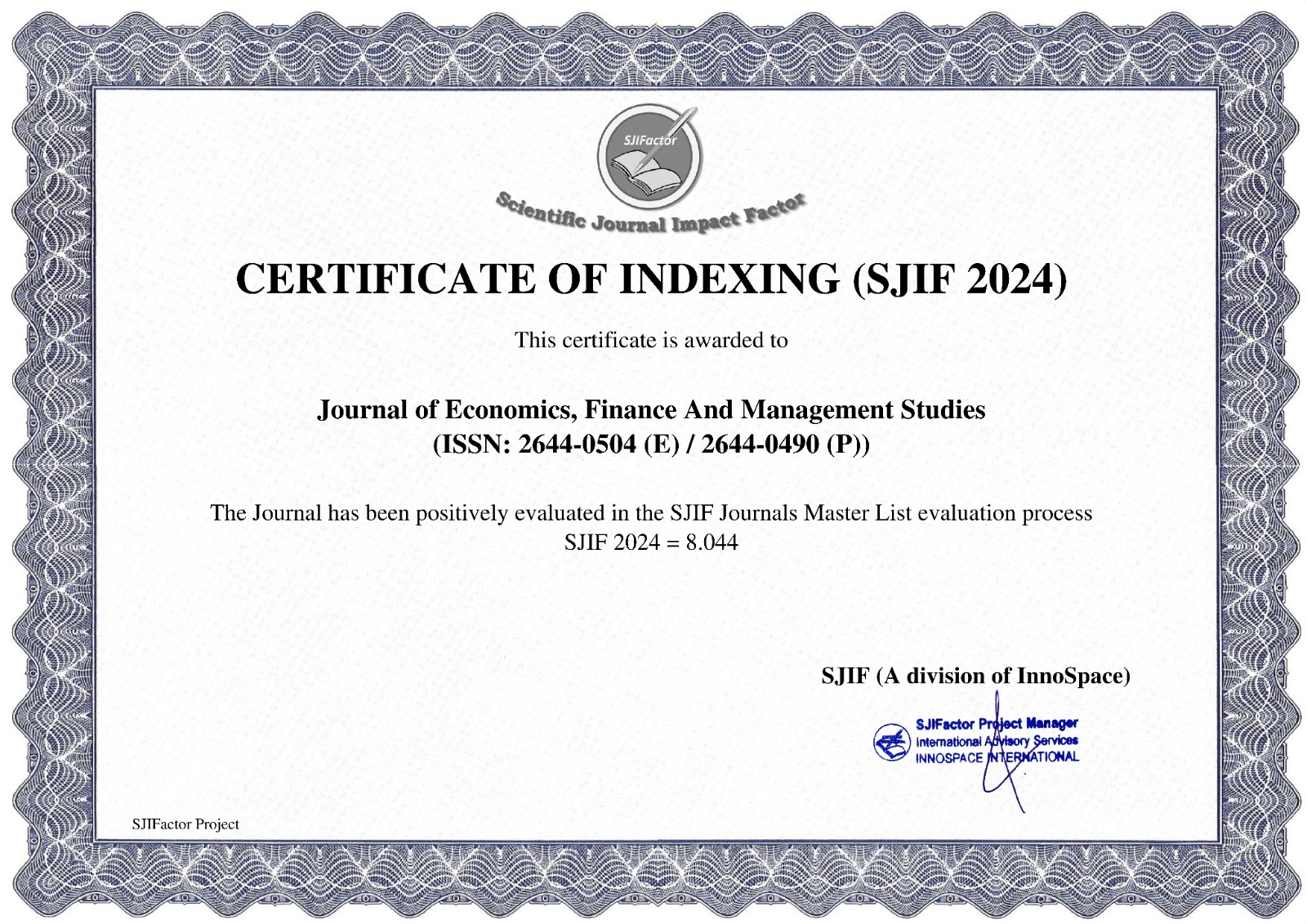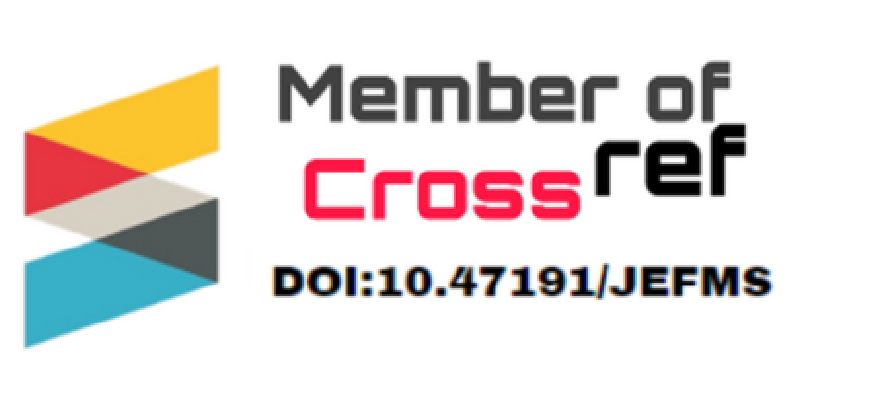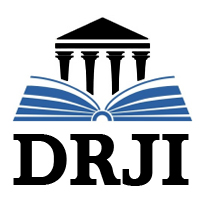US Top Bank Failures: A GARCH Approach to Analyzing Economic Consequences
1Agustina, 2Syafira Ulya Firza, 3Litka Tiadoraria br. Ginting, 4Fandi Halim, 5Mie Mie
1,2,3,4,5Universitas Mikroskil, Jalan M.H. Thamrin No. 140, Medan, North Sumatera, Indonesia
https://doi.org/10.47191/jefms/v8-i3-15ABSTRACT:
This study aims to examine the economic consequences of US Top Bank Failures, particularly in Indonesia, with the expectation of providing a predictive model for economic conditions in the event of similar global economic situations. The research employs difference testing and GARCH modeling to analyze investment instruments and the global economy, focusing on the volatility of each instrument's value. Data collection was conducted through secondary sources from websites. The results indicate that stock indices, inflation rates, gold prices, and cryptocurrencies experienced significant value differences as an impact of bank failures. For GARCH analysis, it was identified that the GARCH(1,1) model is optimal for stock indices and exchange rates, the GJR-GARCH(1,1) model is the best for world gold and cryptocurrency, and the EGARCH(1,1) model is most suitable for predicting inflation rates. Based on the findings, the study highlights the importance of developing tailored investment strategies during periods of financial uncertainty. For the Indonesian market, maintaining economic resilience through sound fiscal and monetary policies is critical to mitigating external shocks. Advanced volatility models, such as GARCH variants, can help investors and policymakers anticipate market behavior, optimize risk management, and enhance economic stability during crises.
KEYWORDS:
Bank Failure, Economic Consequenses, Stock Index, Cryptocurrency, Invesment, GARCH.
REFERENCES:
1) Agustina, A., & Barus, A. C. (2023). Investasi Safe Haven: Dampak Perang Rusia - Ukraina. Owner, 7(3), 2330–2339. https://doi.org/10.33395/owner.v7i3.1523
2) Agustina, Barus, A. C., Firza, S. U., Halim, F., & Ginting, L. T. B. (2024a). Investment volatility during red sea crisis: Study in ASEAN country. Edelweiss Applied Science and Technology, 8(4), 1065–1076. https://doi.org/10.55214/25768484.v8i4.1482
3) Agustina, Barus, A. C., Firza, S. U., Halim, F., & Ginting, L. T. B. (2024b). Volatilitas Nilai Tukar dan Harga Komoditas Global selama Krisis Laut Merah (Exchange Rate and Global Commodity Price Volatility during Red Sea Crisis). 5(4), 327–339. https://doi.org/10.35912/jakman.v5i4.3336
4) Ain Shahrier, N. (2022). Contagion effects in ASEAN-5 exchange rates during the Covid-19 pandemic. North American Journal of Economics and Finance, 62. https://doi.org/10.1016/j.najef.2022.101707
5) Alghifary, M. S., Kadji, D., & Hafizah, I. (2023). Islamic and Conventional Stocks’ Volatility: Evidence from the Three Waves of Covid-19 Pandemic. International Journal of Islamic Economics and Finance (IJIEF), 6(1). https://doi.org/10.18196/ijief.v6i1.14838
6) Aloui, D., Zouaoui, R., Rachdi, H., Guesmi, K., & Yarovaya, L. (2024). The impact of ECB’s Quantitative Easing on cryptocurrency markets during times of crisis. Research in International Business and Finance, 69. https://doi.org/10.1016/j.ribaf.2023.102203
7) Arisandhi, V. D., & Robiyanto, R. (2022). Exchange Rate, Gold Price, And Stock Price Correlation In Asean-5: Evidence From Covid-19 Era. Jurnal Manajemen Dan Kewirausahaan, 24(1), 22–32. https://doi.org/10.9744/jmk.24.1.22-32
8) Beneki, C., Koulis, A., Kyriazis, N. A., & Papadamou, S. (2019). Investigating volatility transmission and hedging properties between Bitcoin and Ethereum. Research in International Business and Finance, 48, 219–227. https://doi.org/10.1016/j.ribaf.2019.01.001
9) Bhiantara, I. B. P. (2018). Teknologi Blockchain Cryptocurrency Di Era Revolusi Digital. Seminar Nasional Pendidikan Teknik Informatika (SENAPATI) Ke 9.
10) Bigerna, S. (2024). Connectedness analysis of oil price shocks, inflation, and exchange rate for the MENA region countries. Resources Policy, 88. https://doi.org/10.1016/j.resourpol.2023.104344
11) Chandra, D. (2023, March 14). IHSG Ambruk 1,34%, Saham Bank Berguguran! Efek SVB? Https://Www.Cnbcindonesia.Com/Market/20230314095448-17-421432/Ihsg-Ambruk-134-Saham-Bank-Berguguran-Efek-Svb.
12) Chemkha, R., BenSaïda, A., Ghorbel, A., & Tayachi, T. (2021). Hedge and safe haven properties during COVID-19: Evidence from Bitcoin and gold. Quarterly Review of Economics and Finance, 82, 71–85. https://doi.org/10.1016/j.qref.2021.07.006
13) Chen, J. (2024, September 4). Exchange Rates: What They Are, How They Work, and Why They Fluctuate. Https://Www.Investopedia.Com/Terms/e/Exchangerate.Asp.
14) CNBC. (2023, March 23). Bank-bank Top Dunia Ambruk & Bangkrut, Ini Sebenarnya Terjadi . Https://Www.Cnbcindonesia.Com/News/20230323152510-4-423979/Bank-Bank-Top-Dunia-Ambruk-Bangkrut-Ini-Sebenarnya-Terjadi.
15) Hamil, N. W. B., Zainudin, A. D. Bin, & Wider, W. (2023). Evidence of COVID-19’s financial epidemiology on the ASEAN-5 stock indices. Asian Economic and Financial Review, 13(3), 180–191. https://doi.org/10.55493/5002.v13i3.4739
16) Hassani, H., Huang, X., & Silva, E. (2018). Big-crypto: Big data, blockchain and cryptocurrency. Big Data and Cognitive Computing, 2(4), 1–15. https://doi.org/10.3390/bdcc2040034
17) IDX. (2024, December). Indeks Saham. Https://Www.Idx.Co.Id/Id/Produk/Indeks.
18) Karmakar, M. (2005). Modeling Conditional Volatility of the Indian Stock Markets. VIKALPA, 30(3).
19) Kayral, I. E., Jeribi, A., & Loukil, S. (2023). Are Bitcoin and Gold a Safe Haven during COVID-19 and the 2022 Russia–Ukraine War? Journal of Risk and Financial Management, 16(4). https://doi.org/10.3390/jrfm16040222
20) Luki, A. (2022, January 18). Pertumbuhan Ekonomi Dunia Melambat. Https://Www.Kompas.Id/Baca/Internasional/2022/01/17/Pertumbuhan-Ekonomi-Dunia-Melambat.
21) Nelson, D. B. (1991). Conditional Heteroskedasticity In Asset Returns: A New Approach. In Source: Econometrica (Vol. 59, Issue 2).
22) Pham, T. A. T., Nguyen, T. T., Nasir, M. A., & Duc Huynh, T. L. (2023). Exchange rate pass-through: A comparative analysis of inflation targeting & non-targeting ASEAN-5 countries. Quarterly Review of Economics and Finance, 87, 158–167. https://doi.org/10.1016/j.qref.2020.07.010
23) Puspitasari, A. (2024). Comparative Analysis of Stock Price Index Before and After The Announcement of Silicon Valley Bank (SVB) Bankruptcy. AJAR, 7(01), 1–20. https://doi.org/10.35129/ajar.v7i01.472
24) Rodani, A. (2023, March 17). Dampak Kolapsnya Silicon Valley Bank terhadapIndustri Perbankan Indonesia. Https://Www.Djkn.Kemenkeu.Go.Id/Kanwil-Kalbar/Baca-Artikel/15975/Dampak-Kolapsnya-Silicon-Valley-Bank-Terhadap-Industri-Perbankan-Indonesia.Html.
25) Ruangsrimun, P. (2024). Exchange Rate Volatility and Cointegration of ASEAN Member Countries. Interdisciplinary Research Review, 19(1).
26) Salikin, N., & Wahab, N. A. (2024). Gold as Safe Haven Strategy During Covid-19 Pandemic: The Case of Bursa Malaysia. 2, 2024. https://ejournal.unida.gontor.ac.id/index.php/FICCOMSS
27) Sarkodie, S. A., Ahmed, M. Y., & Owusu, P. A. (2022). COVID-19 pandemic improves market signals of cryptocurrencies–evidence from Bitcoin, Bitcoin Cash, Ethereum, and Litecoin. Finance Research Letters, 44. https://doi.org/10.1016/j.frl.2021.102049
28) Sekaran, U., & Bougie, R. (2016). Research Method for Business. Wiley & Sons.
29) Simanungkalit, E. F. B. (2020). Pengaruh Inflasi Terhadap Pertumbuhan Ekonomi Di Indonesia (Vol. 13, Issue 3).
30) Taera, E. G., Setiawan, B., Saleem, A., Wahyuni, A. S., Chang, D. K. S., Nathan, R. J., & Lakner, Z. (2023). The impact of Covid-19 and Russia–Ukraine war on the financial asset volatility: Evidence from equity, cryptocurrency and alternative assets. Journal of Open Innovation: Technology, Market, and Complexity, 9(3). https://doi.org/10.1016/j.joitmc.2023.100116
31) Tetteh, B., & Ntsiful, E. (2023). A comparative analysis of the performances of macroeconomic indicators during the Global Financial Crisis, COVID-19 Pandemic, and the Russia-Ukraine War: The Ghanaian case. Research in Globalization, 7. https://doi.org/10.1016/j.resglo.2023.100174
32) Triki, M. B., & Ben Maatoug, A. (2021). The GOLD market as a safe haven against the stock market uncertainty: Evidence from geopolitical risk. Resources Policy, 70. https://doi.org/10.1016/j.resourpol.2020.101872
33) Umar, M., Su, C. W., Rizvi, S. K. A., & Shao, X. F. (2021). Bitcoin: A safe haven asset and a winner amid political and economic uncertainties in the US? Technological Forecasting and Social Change, 167. https://doi.org/10.1016/j.techfore.2021.120680
34) Xu, J., Khan, K., & Cao, Y. (2023). Conflict and exchange rate valuation: Evidence from the Russia-Ukraine conflict. Heliyon, 9(6). https://doi.org/10.1016/j.heliyon.2023.e16527
















